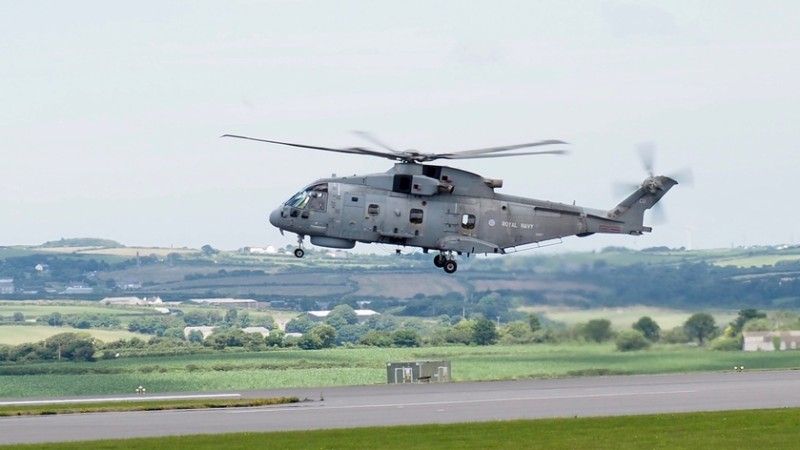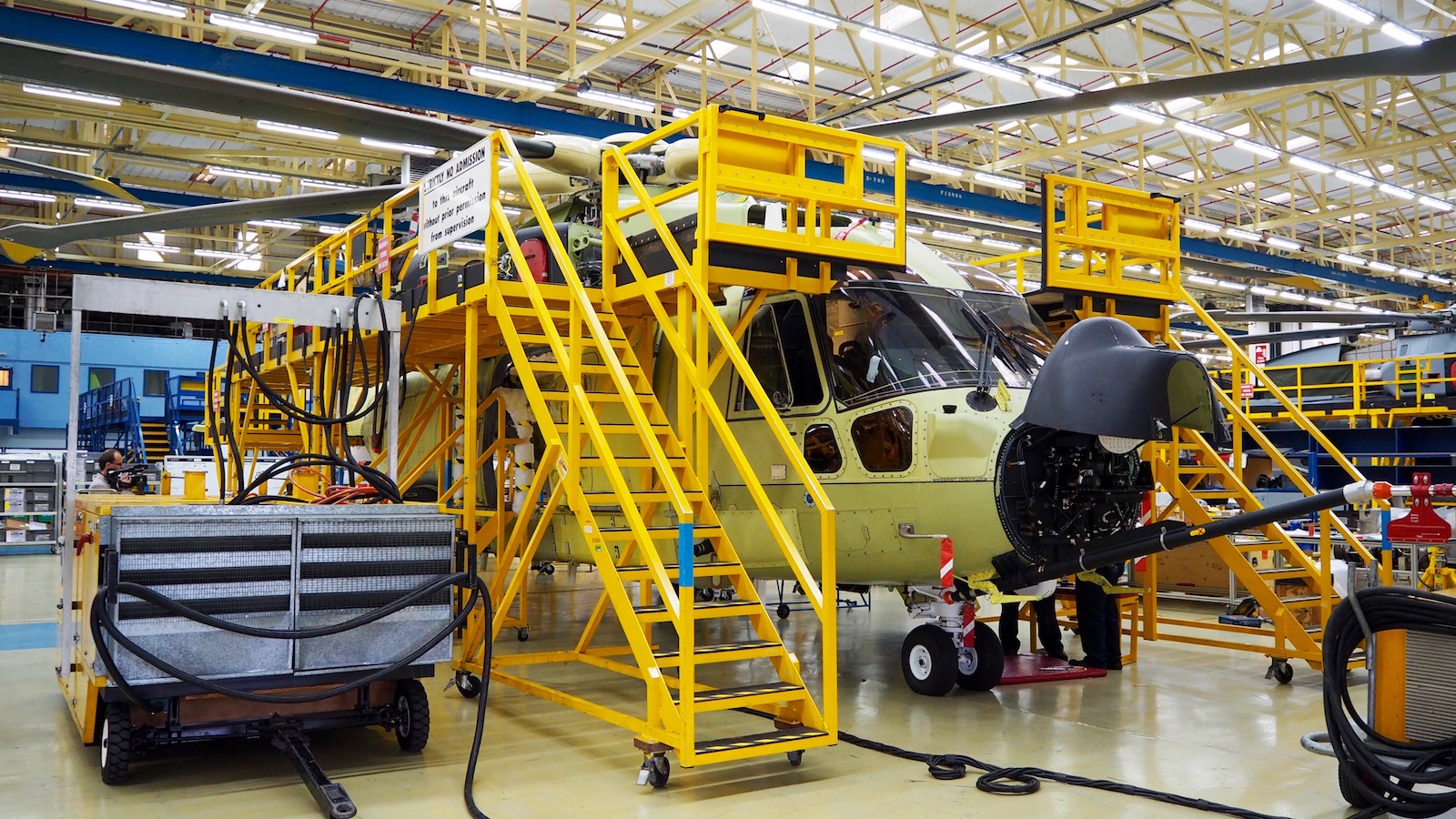Navy
AW101s for the Polish Navy: It’s Only the Beginning

The conclusion of an offset agreement concerning the Polish acquisition of AW101 Merlin ASW helicopters (with optional Combat SAR capability embedded) shall be perceived as a good sign. One should hope that procurement of the first 4 land-based helicopters is the beginning, not the end of the modernization process, concerning the Polish naval aviation. The needs and requirements that exist are much higher, and this can no longer be mitigated by extension of lifecycles of the Mi-14 helicopters that are becoming a thing of the past.
The offset deal announced on 8th April 2019, with regards to acquisition of land-based ASW helicopters that would also offer CSAR capabilities gives some hope to the Polish Navy’s air component. The Navy hopes that a crisis caused by a lack of modern aircraft would come to an end. Currently the lifecycles of Mi-14 helicopters are being extended. The Hazes, being 3 decades old, serve as maritime SAR and ASW platforms. Thanks to the life extension programme 2 Mi-14PŁ/R SAR platforms and 8 Mi-14PŁ ASW helicopters would be available for further operation over the upcoming 4 years. Over that period, not only is it required to deliver new maritime helicopters, as crew training would be equally important, so that the helicopters could become operational.
Decision: Beginning of the Path
Conclusion of the offset agreement, despite its being surprising, means that the tests have been successfully accomplished, with a positive result. Secondly, one should expect the contract proper being signed soon. However, procurement of 4 maritime helicopters solves the problems of the Polish Navy only to a very minor extent. It does not even really solve them, it is rather a signal suggesting that there is a chance that a solution could potentially emerge. The minimum requirements defined within the scope of ensuring security and safety on the Baltic Sea, ASW- and SAR-wise, envisage use of at least twice as many helicopters that would be ready for operation. Thus, the agreement planned in April 2019 shall be treated as a beginning of a long-term process that would envisage resuscitation of the Polish Navy’s air assets.
At the moment there is an urgent requirement to procure the large aircraft, especially for the purpose of carrying out rescue operations. The invaluable support provided by such platform has been recently exemplified by the incident involving a ferry that found itself in the territorial waters of Norway. The need to evacuate a large number of people from a large passenger weather, in challenging conditions, with the use of relatively large H225 Super Puma airframes (civil counterpart of the H225M Caracal helicopter) has turned out to be a major challenge. Should something like that happen in the Polish SAR AoR, the situation would be much more dramatic.
Procurement of large land-based helicopters does not solve all of the Navy’s problems, when it comes to the helicopters. However, one should note that embarked helicopters are a burning issue as well. The Kaman SH-2G Super Seasprite platforms have been operated in Poland since 2003 now, with OHP ORP Gen. K. Pułaski and ORP Gen. T. Kościuszko frigates. Despite the fact that only 50% of their lifecycle has been used up they will have to be withdrawn, as no manufacturer support is available. In the light of the above, as Polish Deputy Minister of Defence Wojciech Skurkiewicz admitted, acquisition of new ASW embarked helicopters has become very urgent. Even if the SH-2G helicopters remaining in service are operated until the Polish Navy runs out of spares, the above would mean that embarked helicopter will also be needed for the newly introduced vessels.
In fact, the decision to maintain the illusory capabilities of the currently operated helicopters seriously impairs the operational abilities of the Polish OHP class vessels. The helicopter, in the current operational context, constitutes a key element of the equipment inventory used by the naval units, both within the scope of reconnaissance, as well as within the scope of acting against any threats. The above applies to the vessels such as the ORP Ślązak or the future Miecznik and Czapla class combatants as well. Not only would it be justified to acquire helicopters and train the crews for the vessels that are being introduced or that are planned to be introduced into service, but, above all, Poland should focus on acquiring helicopters that would operate from the existing vessels and on homogenizing the fleet of the embarked helicopters.

A Success for Leonardo Helicopters
The upcoming agreement conclusion with regards to acquisition of the first AW101 Merlin helicopters for Poland shall be perceived as a major success for the Leonardo company. Here mentioning the “first Merlin helicopters” is a conscious statement. It was repeatedly emphasized that the Polish Navy needs twice as many heavy helos. It could also be expected that AW101 variant for the Special Operations Forces would also be introduced, replacing the Mi-17 platform operated now. HH-101A Caesar has been presented in Poland a couple of times now - for instance during the MSPO 2017 event. It is tailored much better to the modern battlefield circumstances than the Mi-17 and, operationally speaking, it would be complementary when placed alongside the currently procured Black Hawk helicopters. All of the above shall be considered in a longer run of course.
Acquisition of embarked helicopters should be expected to happen earlier. Here, Leonardo Helicopters has a major advantage over its competitors. Not only is the AW159 Wildcat helicopter, popular in Europe and beyond and well-suited to the Polish needs, included in its offer, but launching of a licensed Helicopter Operation Support Centre at WZL-1 (within the framework of an offset agreement) and operation of the AW-101 in the Polish Navy will also have a major impact on future helicopter acquisitions in Poland, at least in the maritime domain. Homogenization, within the scope of supplier and manufacturer, can be justified economy-, logistics- and operations-wise. One should also hope that these matters are being considered by the decisionmakers, as embarked helicopters for OHP, Miecznik or Ślązak class should be a matter that would come up in the foreseeable future.
At the same time, the offset deal related to AW-101 that would see the WZL-1 benefiting from it would constitute a relevant impulse for that company, when it comes to new know-how and western technologies. Making a good use of those capabilities would create new paths of development for this facility, reaching beyond the domain of the post-Soviet equipment. In a longer run it could translate into an ability to maintain and service other helicopter types, in both commercial and military applications.
The breakthrough in question, that follows a long silence caused by the decision to cancel the H225M Caracal contract is a good sign. Notably though, the number of the procured helicopters would not be high. This should be a spark that would initiate the process of replacing the Polish helicopters, otherwise the procurement will not have an operational meaning - it would be purely of political and demonstrative nature. Meanwhile, the helicopter fleet that is broadly utilized by the military and indispensable in the modern conflicts would not last 4 years, until the next election. Urgent and significant injection of new technologies is needed, along with modernization of the owned helicopter fleet.
